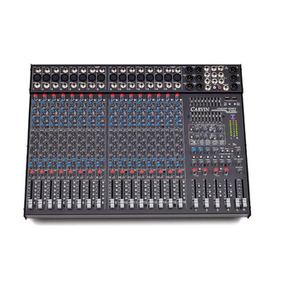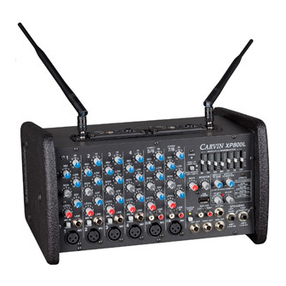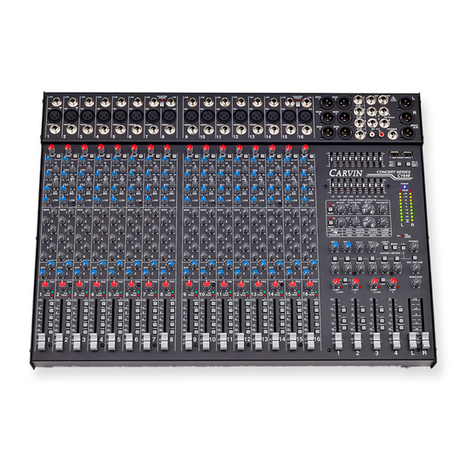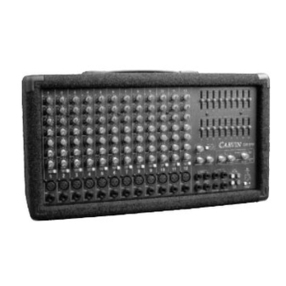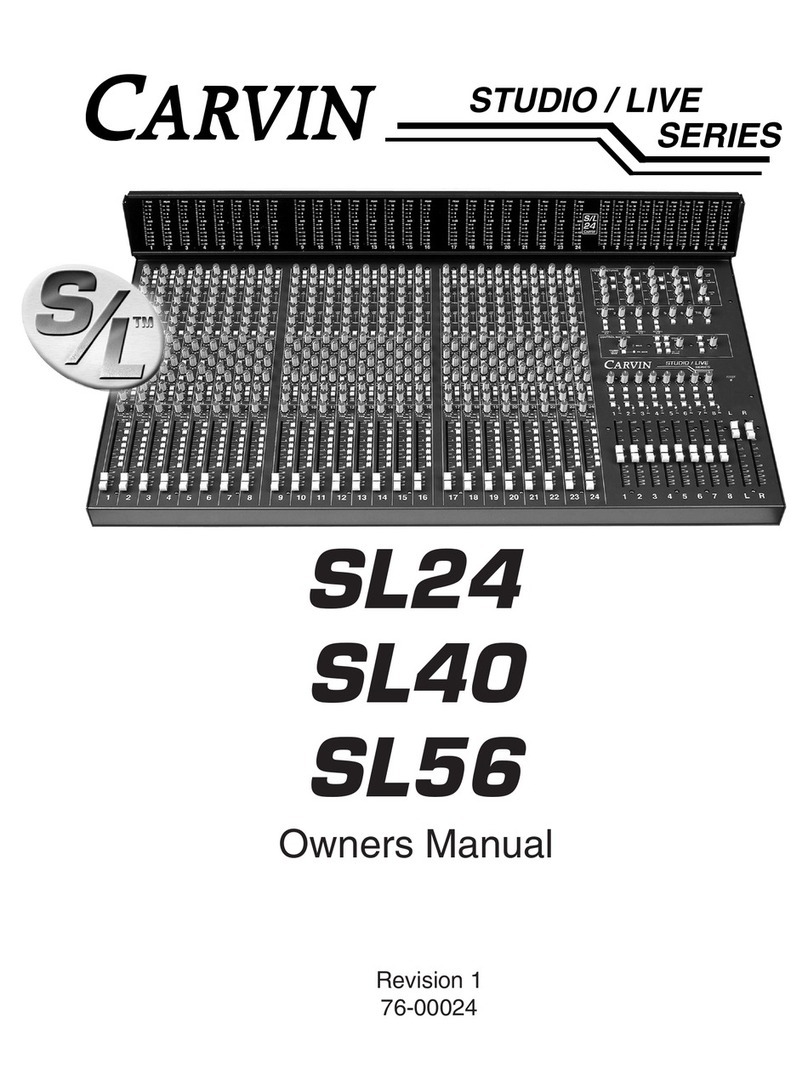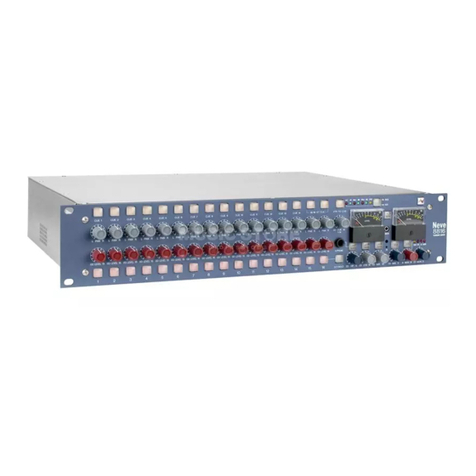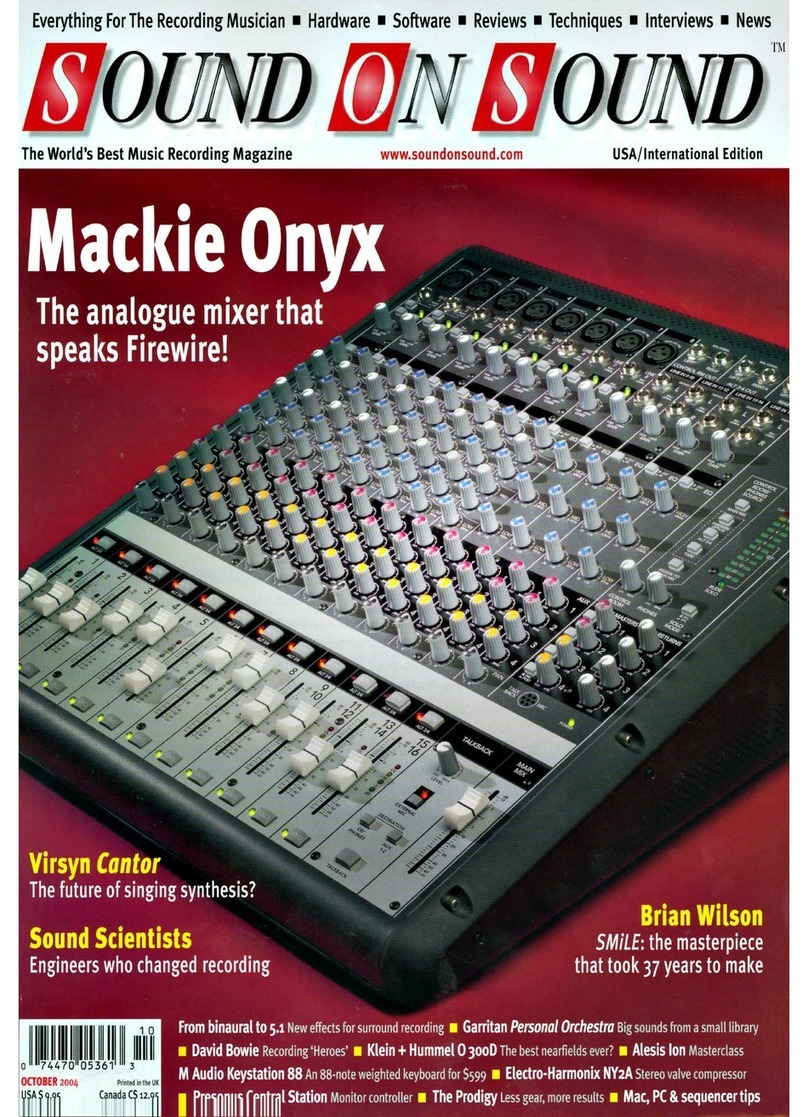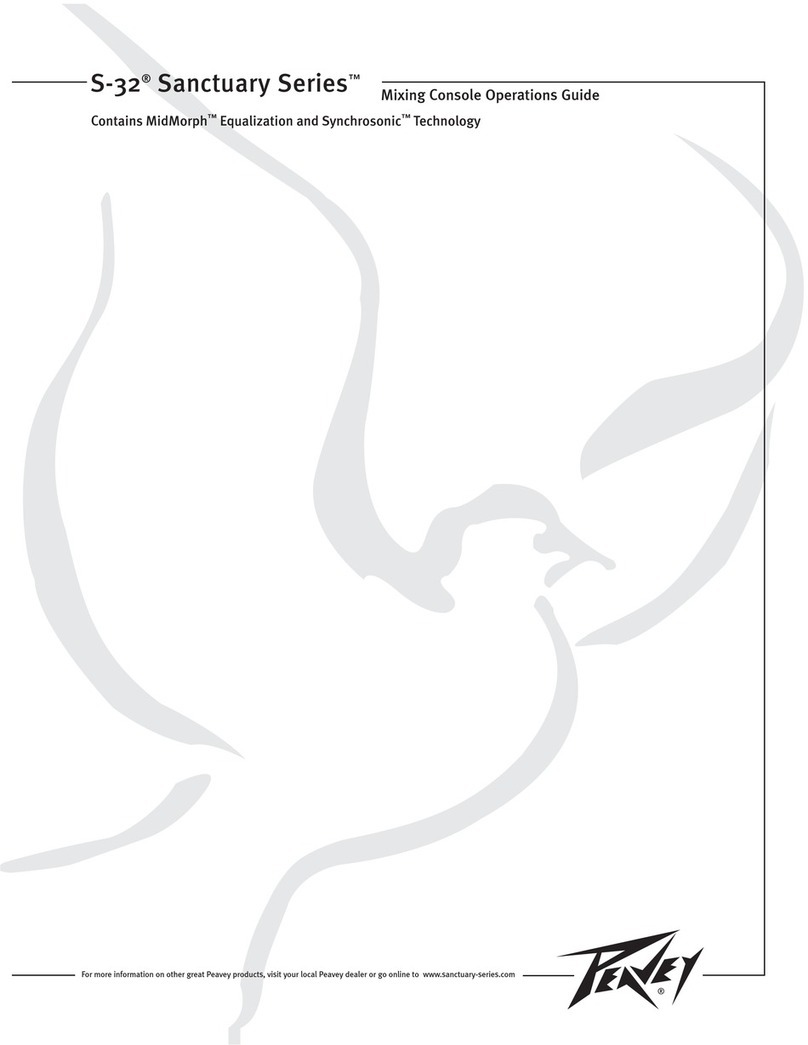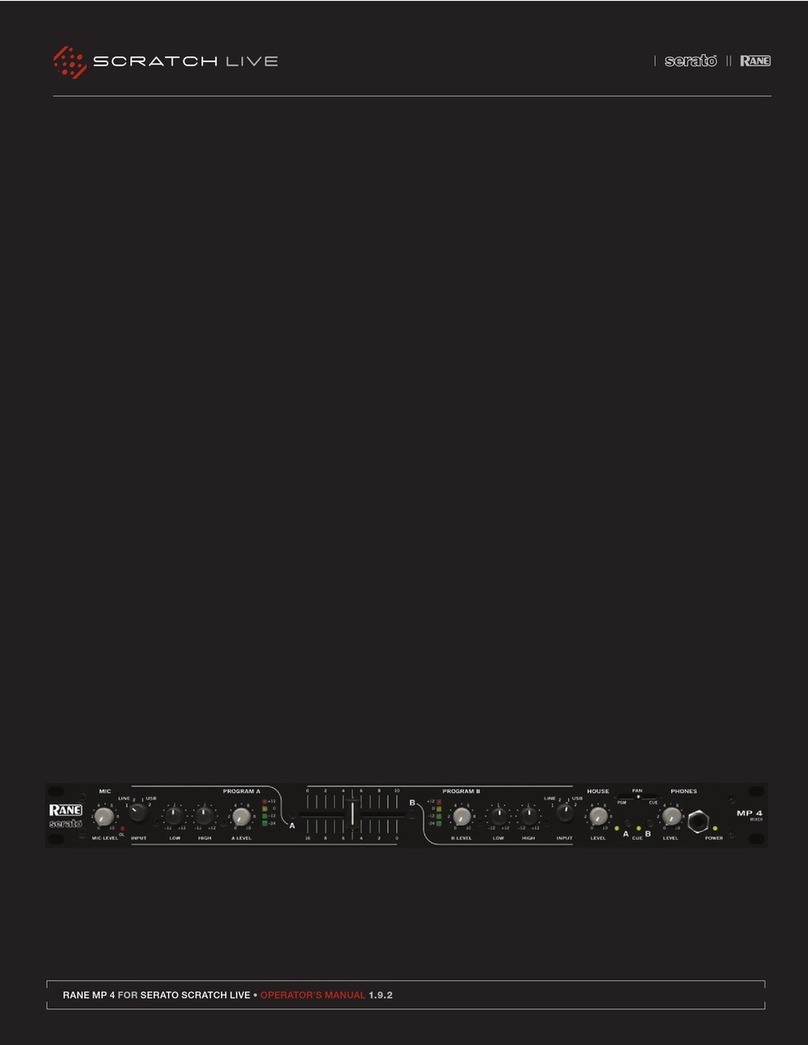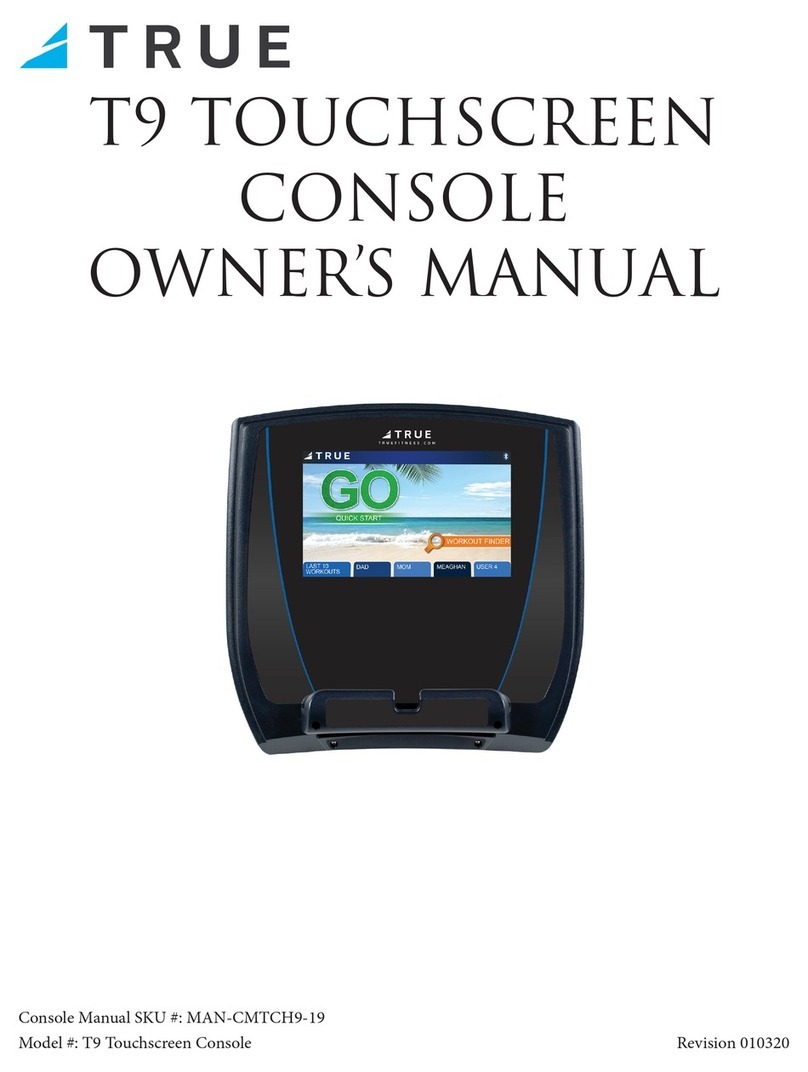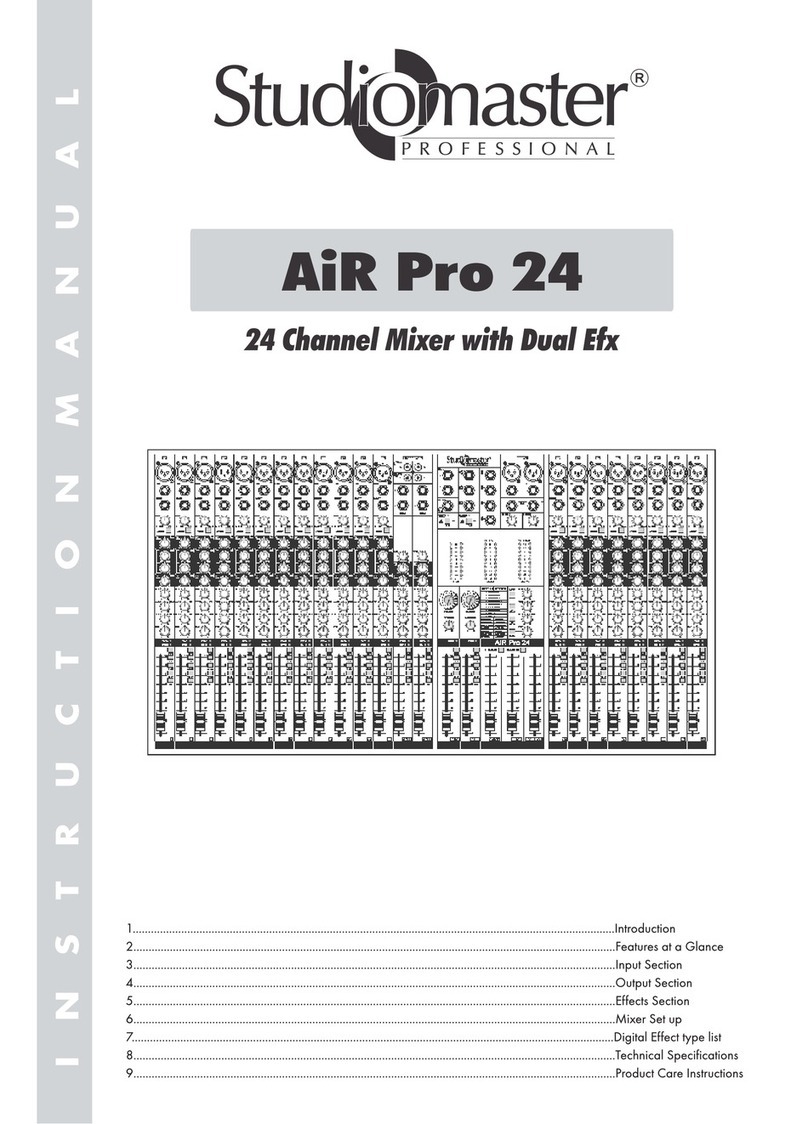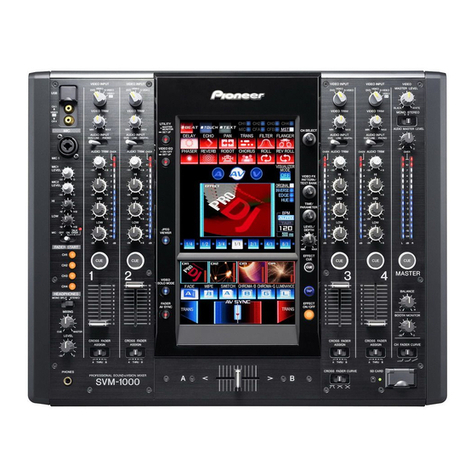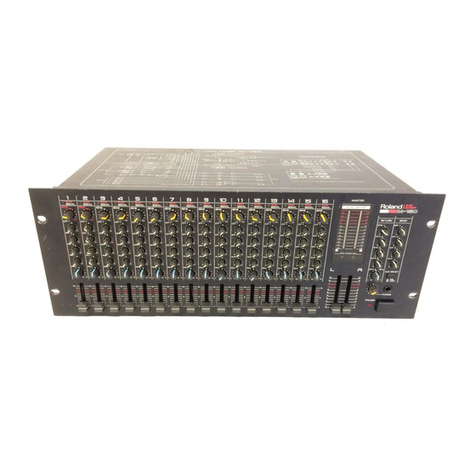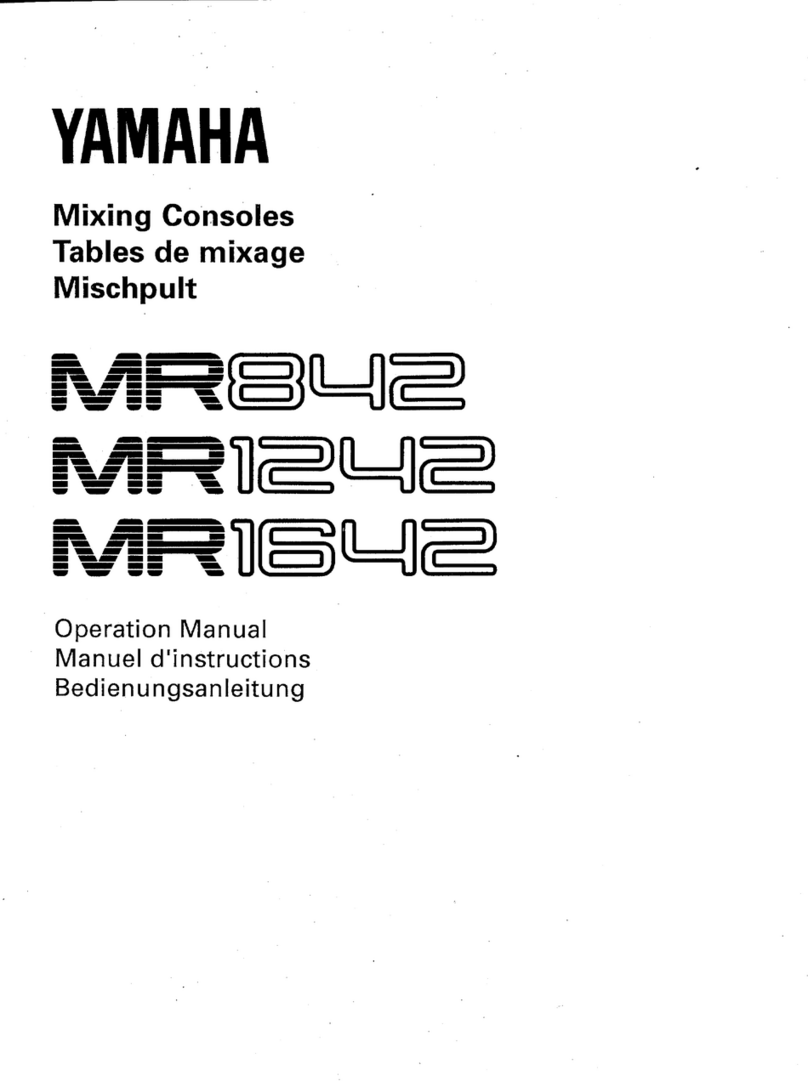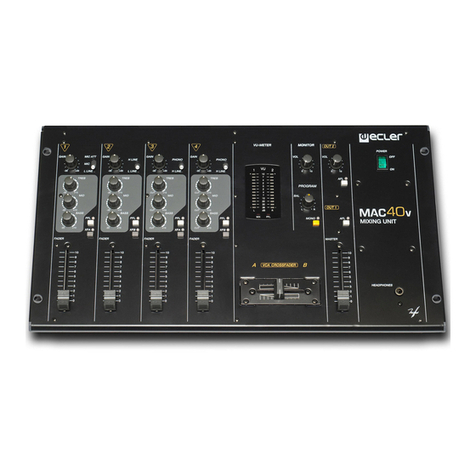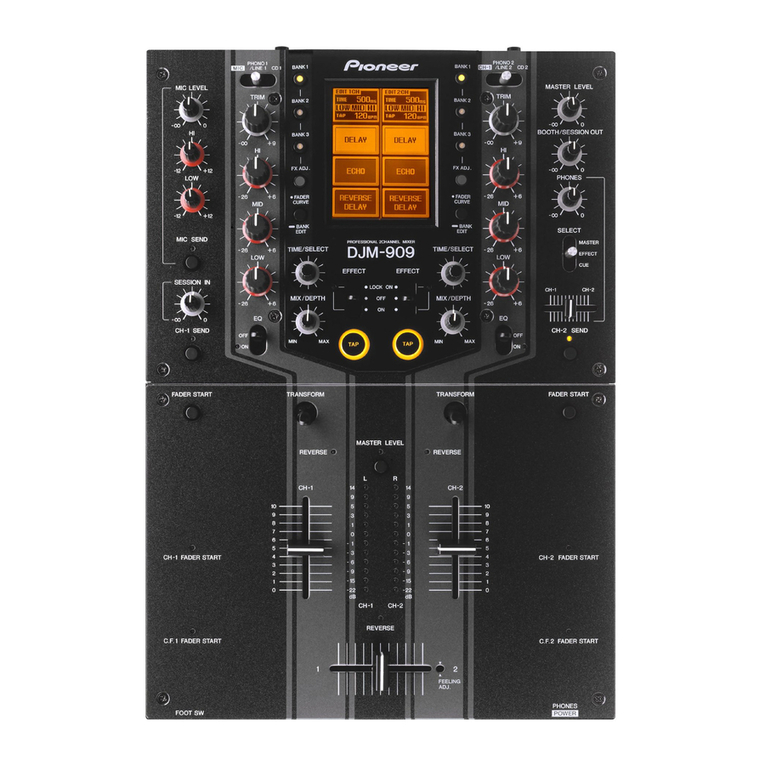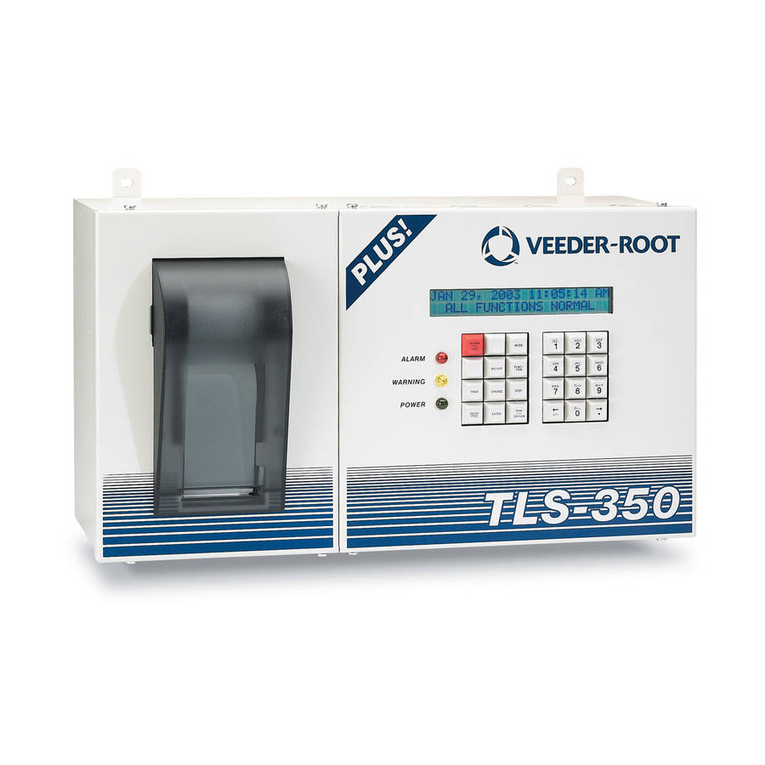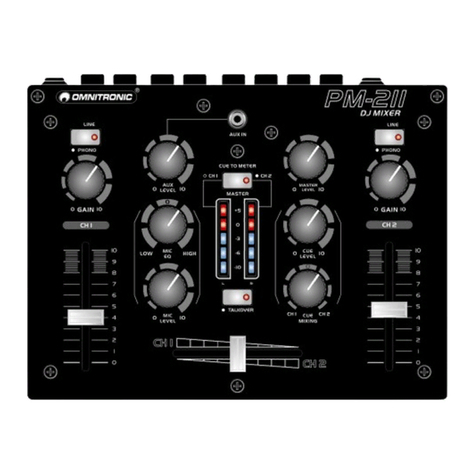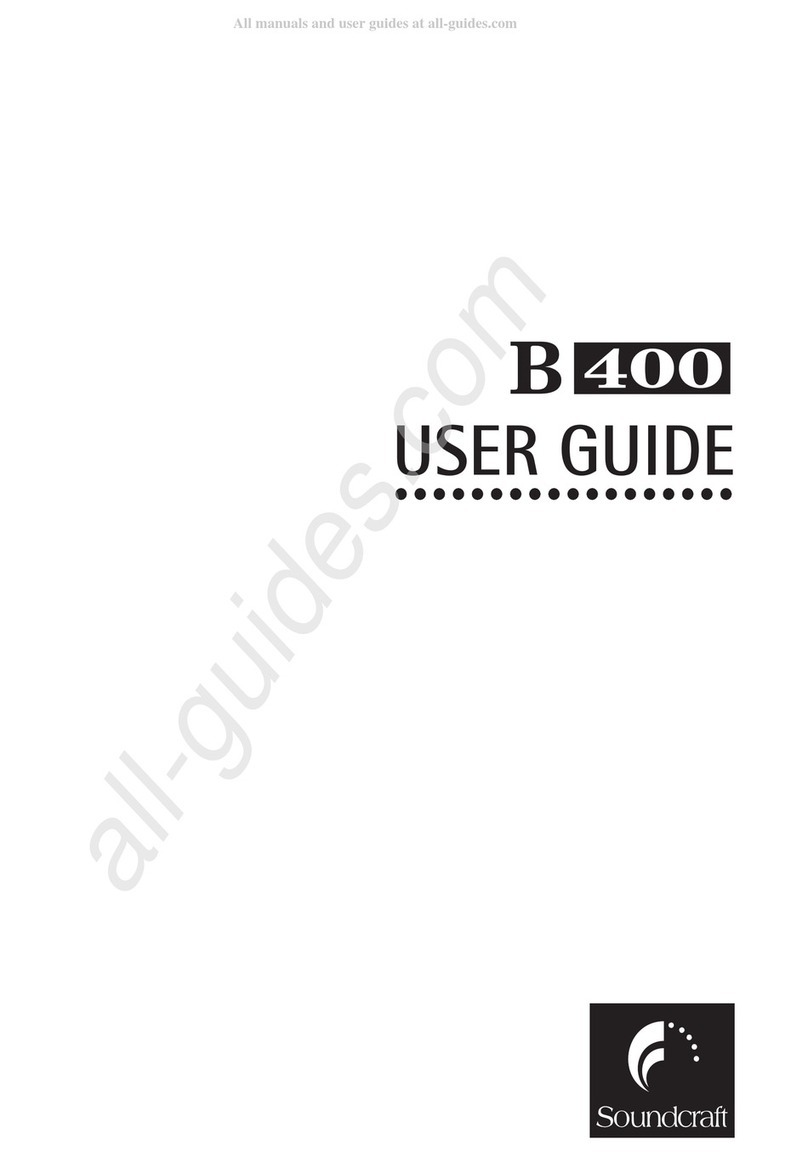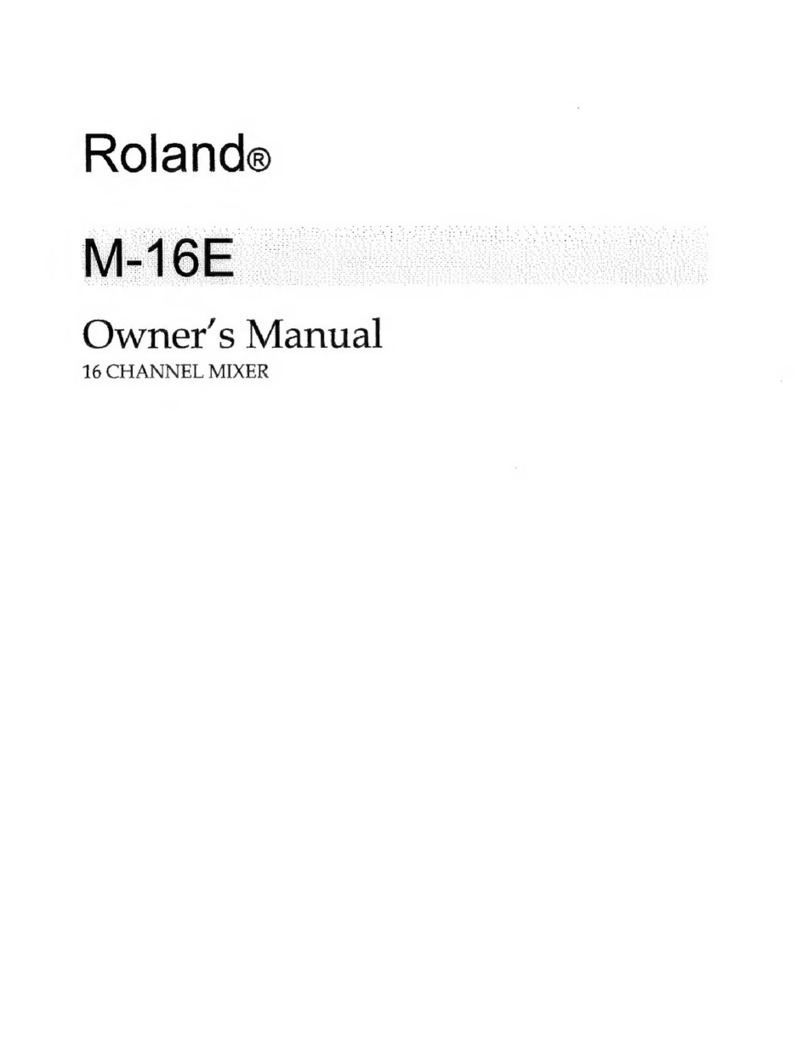CAUTION
RISK OF ELECTRIC SHOCK
DO NOT OPEN
SAFETY INSTRUCTIONS (EUROPEAN)
The conductors in the AC power cord are colored in accordance with the following code.
GREEN & YELLOW—Earth BLUE—Neutral BROWN—Live
U.K. MAIN PLUG WARNING: A molded main plug that has been cut off from the cord is
unsafe. NEVERUNDERANYCIRCUMSTANCESSHOULDYOU INSERTADAMAGED
OR CUT MAIN PLUG INTOA POWER SOCKET.
IMPORTANT! FOR YOUR PROTECTION, PLEASE READ THE FOLLOWING:
WATER AND MOISTURE: Appliance should not be used near water (near a bathtub, washbowl,
kitchen sink, laundry tub, in a wet basement or near a swimming pool, etc). Care should be taken
so that objects do not fall and liquids are not spilled into the enclosure through openings.
POWERSOURCES: The appliance should beconnected to a powersupplyonly of the typedescribed
in the operating instructions or as marked on the appliance.
GROUNDING OR POLARIZATION: Precautions should be taken so that the grounding or polar-
ization means of an appliance is not defeated.
POWER CORD PROTECTION: Power supply cords should be routed so that they are not likely
to be walked on or pinched by items placed upon or against them, paying particular attention
to cords at plugs, convenience receptacles, and the point where they exit from the appliance.
SERVICING: The user should not attempt to service the appliance beyond that described in the
operating instructions. All other servicing should be referred to qualified service personnel.
FUSING: If your unit is equipped with a fuse receptacle, replace only with the same type fuse.
Refer to replacement text on the unit for correct fuse type.
REFER SERVICING TO QUALIFIED SERVICE
PERSONNEL! THIS UNIT CONTAINS HIGH
VOLTAGE INSIDE!
CAUTION
RISK OF ELECTRIC SHOCK
Ref. Des. DESCRIPTION Carvin P/N
A1 Op Amp NE5532 60-55320
A2-A11 Op Amp MC4558 60-45580
A12 Op Amp NE5532 60-55320
A13-A15 Op Amp MC4558 60-45580
A201 Op Amp NE5532 60-55320
A304-A306 Op Amp MC4558 60-45580
A404-A406 Op Amp MC4558 60-45580
A504-A506 Op Amp MC4558 60-45580
B1- B3 Jumper .35” 50-00035
C1,C2 82PF 500 Volt 45-82052
C3-C5 10µF 50V 47-10051
C6 47µF 63 Volt 47-47061
C7 39PF 500V 45-39052
C8 0.047µF 100V 46-47312
C9 330PF 1000 Volt 45-33113
C10 0.0047µF 100 Volt 46-47212
C11 10µF 50V 47-10051
C12 39PF 500 Volt 45-39052
C13 47µF 63 Volt 47-47061
C14, C15 1000µF 25V 47-10225
C16-C22 10µF 50V 47-10051
C23 0.047µF 100V 46-47312
C24 0.0022µF 100V 46-22212
C25, C26 1000µF 25V 47-10225
C27-C33 10µF 50V 47-10051
C34 330PF 1000 Volt 45-33113
C35 0.0047µF 100 Volt 46-47212
C36 330PF 1000 Volt 45-33113
C37 0.0047µF 100 Volt 46-47212
C38, C39 39PF 500 Volt 45-39052
C40-C42 10µF 50V 47-10051
C43 0.0022µF 100V 46-22212
C44 0.047µF 100V 46-47312
C45 0.047µF 100V 46-47312
C60 10µF 50V 47-10051
C61 39PF 500 Volt 45-39052
C62 10µF 50V 47-10051
C63 39PF 500 Volt 45-39052
C64 10µF 50V 47-10051
C65 39PF 500 Volt 45-39052
C67 10µF 50V 47-10051
C68 39PF 500 Volt 45-39052
C69 10µF 50V 47-10051
C70 39PF 500 Volt 45-39052
C71 10µF 50V 47-10051
C72 39PF 500 Volt 45-39052
C74 39PF 500 Volt 45-39052
C77 39PF 500 Volt 45-39052
C80 39PF 500 Volt 45-39052
C83 39PF 500 Volt 45-39052
C90-C93 10µF 50V 47-10051
C104 0.047µF 100V 46-47312
C105 0.047µF 100V 46-47312
C201 82PF 500 Volt 45-82052
C202 82PF 500 Volt 45-82052
C203-C205 10µF 50V 47-10051
C206 47µF 63 Volt 47-47061
C207 39PF 500V 45-39052
C209 330PF 1000 Volt 45-33113
C210 0.0047µF 100 Volt 46-47212
C211 10µF 50V 47-10051
C212 39PF 500 Volt 45-39052
C213 47µF 63 Volt 47-47061
C330-C333 10µF 50V 47-10051
C334 330PF 1000 Volt 45-33113
C335 0.0047µF 100 Volt 46-47212
C336 330PF 1000 Volt 45-33113
C337 0.0047µF 100 Volt 46-47212
C338 39PF 500 Volt 45-39052
C339 39PF 500 Volt 45-39052
C340, C341 10µF 50V 47-10051
C430-C433 10µF 50V 47-10051
C434 330PF 1000 Volt 45-33113
C435 0.0047µF 100 Volt 46-47212
C436 330PF 1000 Volt 45-33113
C437 0.0047µF 100 Volt 46-47212
C438 39PF 500 Volt 45-39052
C439 39PF 500 Volt 45-39052
C440, C441 10µF 50V 47-10051
C530-C533 10µF 50V 47-10051
C534 330PF 1000 Volt 45-33113
C535 0.0047µF 100 Volt 46-47212
C536 330PF 1000 Volt 45-33113
C537 0.0047µF 100 Volt 46-47212
C538 39PF 500 Volt 45-39052
C539 39PF 500 Volt 45-39052
C540, C541 10µF 50V 47-10051
D1-D3 Green small 60-75330
D4 Yellow small 60-24251
D5, D6 Red small 60-75320
D7-D10 Green small 60-75330
D11 1N1914 HI SPD 61-19140
D12-D14 Green small 60-75330
D15 Yellow small 60-24251
D16, D17 Red small 60-75320
D18-D21 Green small 60-75330
D22 1N1914 HI SPD 61-19140
D23, D24 Red small 60-75320
D25-D28 1N4003 60-40030
D29, D30 1N1914 HI SPD 61-19140
F1 Fuse Clips 23-03529
J1 7 Pin Plastic 21-06457
J2 XLRF Neutrik 21-40000
J3-J11 3 Pin Plastic 21-06453
J12 Phone Jack x4 21-40022
J13 7 Pin Plastic 21-06457
J101, J102 3 Pin Plastic 21-06453
J201 7 Pin Plastic 21-06457
J202 XLRF Neutrik 21-40000
J203 3 Pin Plastic 21-06453
J301, J302 3 Pin Plastic 21-06453
J401, J402 3 Pin Plastic 21-06453
J501, J502 3 Pin Plastic 21-06453
P1 B50K D Vert 9mm 71-09053
P2-P4 B50K-C D Vert 9mm 71-09052
P5, P6 B50K D Vert 9mm 71-09053
P7 B5K-C D Vrt 9m 35 71-09050
P8 B50K D Vrt 12m 35 71-13056
P9-P11 B100Kx2 D Vrt 12m 71-13064
P12, P13 B50K D Vrt 9m 35 71-09053
P14, P15 B100Kx2 D Vrt 12m 71-13064
P101-P103 B50Kx2-C D Vrt 12 71-13062
P104, P105 B50K D Vrt 9m 35 71-09053
P106 B5K-C D Vrt 9m 35 71-09050
P107 B100Kx2 D Vrt 12m 71-13064
P201 B50K D Vrt 9m 35 71-09053
P202-P204 B50K-C D Vert 9mm 71-09052
P205,P206 B50K D Vrt 9m 35 71-09053
P207 B5K-C D Vrt 9m 35 71-09050
P208 B50K D Vrt 9m 35 71-09053
P301-P303 B50Kx2-C D Vrt 12 71-13062
P304, P305 B50K D Vrt 9m 35 71-09053
P306 B5K-C D Vrt 9m 35 71-09050
P307 B100Kx2 D Vrt 12m 71-13064
P401-P403 B50Kx2-C D Vrt 12 71-13062
P404, P405 B50K D Vrt 9m 35 71-09053
P406 B5K-C D Vrt 9m 35 71-09050
P407 B100Kx2 D Vrt 12m 71-13064
P501-P503 B50Kx2-C D Vrt 12 71-13062
P504, P505 B50K D Vrt 9m 35 71-09053
P506 B5K-C D Vrt 9m 35 71-09050
P507 B100Kx2 D Vrt 12m 71-13064
Q1 7815 +15V 60-78150
Q2 7915 -15V 60-79150
R1, R2 5.62K 0.25W 50-56231
R3 10K 0.25W 50-10045
R4, R5 2.2K 0.25W 50-22035
R6, R7 4.7K 50-47035
R8 1.5K 50-15035
R9 47K 50-47045
R10 4.7K 0.25W 50-47035
R11 100K 0.25W 50-10055
R12 150K 0.25W 50-15055
R13 4.7K 0.25W 50-47035
R14 470Ω0.25W 50-47025
R15 10K 0.25W 50-10045
R16 4.7K 0.25W 50-47035
R17 22K 50-22045
R18 4.7K 0.25W 50-47035
R19-R21 22K 50-22045
R22 Jumper .35” 50-00035
R25, R26 22K 50-22045
R27, R28 10K 50-10045
R30, R31 Jumper .35” 50-00035
R32 4.7K 0.25W 50-47035
R33, R34 Jumper .35” 50-00035
R35 4.7K 0.25W 50-47035
R36 100K 0.25W 50-10055
R37 150K 0.25W 50-15055
R38 4.7K 0.25W 50-47035
R39 100K 0.25W 50-10055
R40 150K 0.25W 50-15055
R41 4.7K 0.25W 50-47035
R42 10K 0.25W 50-10045
R43 4.7K 0.25W 50-47035
R44 10K 0.25W 50-10045
R45 4.7K 0.25W 50-47035
R46, R47 22K 50-22045
R48, R49 10K 0.25W 50-10045
R50, R51 22K 50-22045
R53, R54 100K 50-10055
R60 22K 0.25W 50-22045
R61 10K 50-10045
R62 22K 0.25W 50-22045
R63 10K 50-10045
R64 22K 0.25W 50-22045
R65 10K 50-10045
R67 22K 0.25W 50-22045
R68 10K 50-10045
R69 22K 0.25W 50-22045
R70 10K 50-10045
R71 22K 0.25W 50-22045
R72 10K 50-10045
R74, R76 470Ω0.25W 50-47025
R80 22K 0.25W 50-22045
R81 10K 0.25W 50-10045
R83 22K 0.25W 50-22045
R84 10K 0.25W 50-10045
R86-R89 470Ω50-47025
R90 10K 50-10045
R91 22K 0.25W 50-22045
R92 100Ω0.25W 50-10025
R93 10K 50-10045
R94 22K 0.25W 50-22045
R95 100Ω0.25W 50-10025
R100 2.2K 0.25W 50-22035
R101, R102 Jumper .35” 50-00035
R105, R106 2.2K 0.25W 50-22035
R107 150K 0.25W 50-15055
R108 3.3K 50-33035
R109 8.2K 0.25W 50-82035
R110 3.3K 50-33035
R111 8.2K 0.25W 50-82035
R112 15K 50-15045
R113 36K 50-36045
R115 15K 50-15045
R116 36K 50-36045
R201, R202 5.62K 0.25W 50-56231
R203 10K 0.25W 50-10045
R204, R205 2.2K 0.25W 50-22035
R206, R207 4.7K 50-47035
R208 1.5K 50-15035
R209 47K 50-47045
R210 4.7K 0.25W 50-47035
R211 100K 0.25W 50-10055
R212 150K 0.25W 50-15055
R213 4.7K 0.25W 50-47035
R214 470Ω0.25W 50-47025
R215 10K 0.25W 50-10045
R216 4.7K 0.25W 50-47035
R217 10K 0.25W 50-10045
R218 4.7K 0.25W 50-47035
R219 10K 0.25W 50-10045
R220, R221 4.7K 0.25W 50-47035
R330, R331 Jumper .35” 50-00035
R332 4.7K 0.25W 50-47035
R333, R334 Jumper .35” 50-00035
R335 4.7K 0.25W 50-47035
R336 100K 0.25W 50-10055
R337 150K 0.25W 50-15055
R338 4.7K 0.25W 50-47035
R339 100K 0.25W 50-10055
R340 150K 0.25W 50-15055
R341 4.7K 0.25W 50-47035
R342 10K 0.25W 50-10045
R343 4.7K 0.25W 50-47035
R344 10K 0.25W 50-10045
R345 4.7K 0.25W 50-47035
R346, R347 22K 50-22045
R348, R349 10K 0.25W 50-10045
R350, R351 22K 50-22045
R353, R354 100K 50-10055
R430, R431 Jumper .35” 50-00035
R432 4.7K 0.25W 50-47035
R433, R434 Jumper .35” 50-00035
R435 4.7K 0.25W 50-47035
R436 100K 0.25W 50-10055
R437 150K 0.25W 50-15055
R438 4.7K 0.25W 50-47035
R439 100K 0.25W 50-10055
R440 150K 0.25W 50-15055
R441 4.7K 0.25W 50-47035
R442 10K 0.25W 50-10045
R443 4.7K 0.25W 50-47035
R444 10K 0.25W 50-10045
R445 4.7K 0.25W 50-47035
R446, R447 22K 50-22045
R448, R449 10K 0.25W 50-10045
R450, R451 22K 50-22045
R453, R454 100K 50-10055
R530, R531 Jumper .35” 50-00035
R532 4.7K 0.25W 50-47035
R533, R534 Jumper .35” 50-00035
R535 4.7K 0.25W 50-47035
R536 100K 0.25W 50-10055
R537 150K 0.25W 50-15055
R538 4.7K 0.25W 50-47035
R539 100K 0.25W 50-10055
R540 150K 0.25W 50-15055
R541 4.7K 0.25W 50-47035
R542 10K 0.25W 50-10045
R543 4.7K 0.25W 50-47035
R544 10K 0.25W 50-10045
R545 4.7K 0.25W 50-47035
R546, R547 22K 50-22045
R548, R549 10K 0.25W 50-10045
R550, R551 22K 50-22045
R553, R554 100K 50-10055
S1 DPDT Push Vert 25-02201
T1 Toroid 7VA 15-70033
U1,U2 Display LM3915 60-39150
Z1 Zener 6.2V 1N4735A 60-47350
REPLACEMENT PARTS LIST (for circuit cards)
This symbol is intended to
alert the user to the pres-
ence of uninsulated “dan-
gerous voltage” within the
product’s enclosure that may be of suf-
ficient magnitude to constitute a risk of
electric shock to persons.
This symbol is
intended to alert the
user to the presence of
important operating
and maintenance (servicing) instruc-
tions in the literature accompanying
the appliance.
LIMITED WARRANTY
Your Carvin product is guaranteed against failure for ONE YEAR unless otherwise stated. Carvin will
serviceand supply all partsat no chargeto the customerproviding the unitisunder warranty. Shipping
costsare the responsibilityof the customer. CARVINDOESNOT PAYFOR PARTSOR SERVICINGOTHER
THAN OUR OWN. A COPY OF THE ORIGINAL INVOICE IS REQUIRED TO VERIFY YOUR WARRANTY.
Carvin assumes no responsibility for horn drivers or speakers damaged by this unit. This warranty
does not cover, and no liability is assumed, for damage due to: natural disasters, accidents, abuse,
loss of parts, lack of reasonable care, incorrect use, or failure to follow instructions. This warranty
is in lieu of all other warranties, expressed or implied. No representative or person is authorized to
represent or assume for Carvin any liability in connection with the sale or servicing of Carvin prod-
ucts. CARVIN SHALL NOT BE LIABLE FOR INCIDENTAL OR CONSEQUENTIAL DAMAGES.
WhenRETURNING merchandiseto the factory,you maycall for areturn authorization number. Describe
in writing each problem. If your unit is out of warranty, you will be charged the current FLAT RATE for
parts and labor to bring your unit up to factory specifications.
HELP SECTION
1) MIXER WILL NOT TURN ON
Checkthe power tothe amp. Check fortripped circuitbreakers,unplugged extension cordsor power-
strip switches that may be turned off. Check the fuse. If a dark brownish color or no wire can be
seen within the glass tube, then replace. The mixer may be perfectly fine but occasionally a fuse
may blow because of high AC voltage surges. After the fuse has been replaced with the proper
Slow Blow value and if the fuse fails again, the mixer will require servicing.
2) KEEP YOUR MIXER LOOKING NEW
Use caution to avoid spilling liquids or allowing any other foreign matter inside the unit. The top
of the mixer can be wiped from time to time with a dry or slightly damp cloth in order to remove
dust and bring back the new look. A suggestion is to cover the mixer when not in use. This can
be done with a cloth or a small towel to reduce the amount of dust collection on the mixer. Well
cared for equipment is usually friendlier equipment in the long run.
12340 World Trade Drive, San Diego, CA 92128
(619) 487-1600 (800) 854-2235
www.carvin.com
STUDIO MATE BLOCK DIAGRAM
Congratulationsonyour purchaseof the SM162 16 channel stereomixer. Your new Studio
Matemixer demonstrates CARVIN’scommitment to the proaudio worldby offering sophis-
ticated signal mixing and processing in a compact easy to use console. The Studio Mate is
designed to be a powerful tool for the home studio where limited space and high perfor-
mance are the main requirements. Its features make it ideal for mixing to cassette, DAT or
for hard disk recording with a computer. The Studio Mate is also rugged enough to handle
many live applications. The SM162’s high quality construction will provide years of trou-
ble-free performance and will reproduce your music flawlessly. Enjoy your new SM162!
16 CHANNEL OVERVIEW
Thereare8MIC/LINEinputchannelswithXLR and 1/4” LINE inputs and PATCHinsert jacks.
Therearealso 4 STEREO input channels(8 mono) withtwo 1/4” LINE inputseach. The XLR
channelsfeatureinputGAINcontrolsandprovidePhantom power for condenser mics. There
are 3 bands of EQ and 2 post fader effect SENDS on each channel. The master section fea-
tures2 SENDS and2 stereo RETURNSalong withRCA tapeIN’sand OUTsthat canbe used
as a separate stereo channel with it’s own level control. A master LEFT/RIGHT level control
alsofeeds a1/4”stereoheadphonejackwithits own level control. The stereo LED VU meter-
ing gives you bright,clear visibility of your output levels.
“SHELVING” EQ WITH ACTIVE TONE CIRCUITS
The SM162 incorporates 3 bands of EQ’s per channel that offer smooth tone curves so
youradjustmentswillsoundnaturalandyetbe effective. Depth is added to your bass because
80 Hz is chosen for the LOW frequency EQ controls instead of the usual 100 Hz. The HI EQ
controls are set at 11.5k Hz which is slightly higher than the normal 10k Hz treble controls
giving more top-end clarity. These are “shelving” type controls which cover the complete
frequency band from 80 Hz down to 20 Hz and from 11.5K Hz up to 20k Hz. The MID EQ
controlsare a “band pass”type which peakat 2.2k Hzfor added presenceto yourmid range
tones. Because CARVIN uses “active” tone circuits, you are able to boost or cut your tones
without any signal loss in your mixer.
RECEIVING INSPECTION—read before getting started
INSPECT YOUR MIXER FOR ANY DAMAGE which may have occurred during shipping.
If any damage is found, please notify the shipping company and CARVIN immediately.
SAVE THE CARTON & ALL PACKING MATERIALS. In the event you have to re-ship your
unit, always use the original carton and packing material. This will provide the best pos-
sible protection during shipment. CARVIN and the shipping company are not liable for
any damage caused by improper packing.
SAVE YOUR INVOICE. It will be required for warranty service if needed in the future.
SHIPMENT SHORTAGE. If you find items missing, they may have been shipped sepa-
rately. Please allow several days for the rest of your order to arrive before inquiring.
RECORD THE SERIAL NUMBER on the enclosed warranty card or below on this manual
for your records. Keep your portion of the card and return the portion with your name
and comments to us.
INTERNAL SIGNAL ROUTING WITH NO RF
Your balanced mic or instrument plugs directly into the high quality XLR Nortrics con-
nectors (used in hundred thousand dollar consoles) and is then routed into the differen-
tial circuits for excellent hum and noise cancellation. As your signal continues within the
console, a double-sided printed circuit board (FR-4 fire rated) carefully guards the circuit
traces with a copper shield running over the traces. This eliminates RF interference and
reduces crosstalk substantially. The printed circuit board has 931 plated-through holes
which means that every component is soldered securely in three places (bottom, in hole
and top). This offers unsurpassed component security while reducing circuit resistance
for pure dynamic sound which is unaffected by poor solder connections.
MORE HEADROOM
Headroomis very importantwhen designinga mixer—especially forrecording. Lackof head-
room will cause your sound to become distorted and muddy. This can happen when you turn
thevolumetoohigh,iftheinputsignalistoohotorifexcess bass or treble is added. With most
mixers, you have to reduce the input gain to fight headroom problems, but this just increases
noise. That’s why we have taken great care in the SM162 to make sure that each gain stage is
properly designed and balanced with more headroom along the entire audio path. There is no
headroom “bottle necking” at the summing stages, ensuring clean, pure audio throughout.
MICRO TOROID SUPPLY
Youwon’tfindthe precision Micro ToroidSupply in any mixer except the SM162and other
CARVIN high-end products. Pure DC is generated from this power supply which features
precision7815and7915voltageregulatorswhichhold voltage tolerances to within .001%.
Now you can go anywhere and never have to worry about the mixer giving you the exact
output and sound you are accustomed to. Another big feature in this power supply is the
precision wound Toroid transformer (not available from our competition) that gives
unsurpassed rejection of noise and hum. You can place the SM162 over sensitive gear
andnotbeconcernedaboutinjectinghumor noise into it like a standard transformer could.
CARVIN has spared no expense to achieve studio quality performance.
PROFESSIONAL HEADPHONES
TheSM162is designed to be usedwith professional headphones. The impedanceof the head-
phone set should be between 40 and 100 ohms with a sensitivity of at least or high than 100
dBm at 1k Hz with 1mv input. 8 ohm or 500 ohm and higher headsets are not recommended.
For your records, you may wish to record the following information.
Serial No._____________________ Invoice Date_______________
SM162
76-00162 996
MODEL SM162 SPECIFICATIONS:
Frequency Response: Mic or Line Inputs: 20Hz-20KHz ±1dB
Total Harmonic Distortion: Less than .009% MIC in - Master out
Equivalent Input Noise: 150 ohm source: -122dBu
Output Noise: -90dBu Master Line Out
(All Levels Minimum)
Output Headroom: +20dB 1/4” unbalanced
Maximum Gain: Mic in to Master Line Out: 70dB
Crosstalk: Adjacent ch’s: -60db at 1KHz
Common Mode Rejection: -80db at 1KHz
Phantom Power: All XLR Mic in channels
Channel EQ.: 3 band active,LOW: 100Hz ±12dB
MID: 2.2KHz ±12dB
HI: 11.5KHz ±12dB
Mic Input: Balanced XLR input: -66 dBu
Line Input: Unbalanced 1/4” Phone Jack -49dBV
Power Consumption: 10VA
Size and Weight: (8 lbs) 2.5”H x 16.2”W x10.2”D




